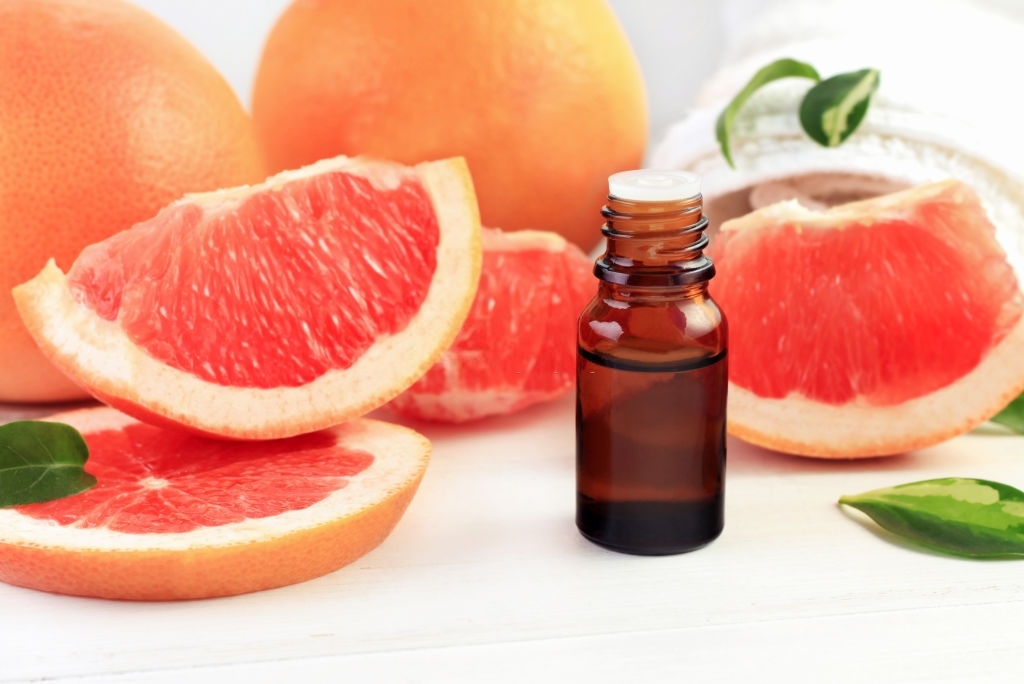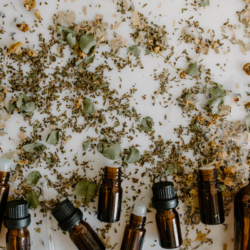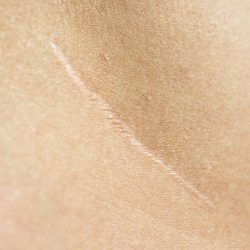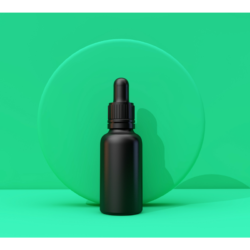Grapefruit, a citrus fruit well known for its unique flavour and many applications, occupies a special place in the world of natural remedies. This article takes an in-depth look at the fascinating world of grapefruit, more specifically the essence extracted from its peel, and delves into its rich history and varied uses. Originally from Asia, grapefruit has travelled across the continents, adapting and evolving, to finally establish itself as a key ingredient in a variety of fields, including health and well-being.
This article looks at the history of the grapefruit, tracing its journey from its Asian origins to its introduction in Europe and development in the Caribbean. The pomelo, closely related to the grapefruit, also has its own story to tell, including its development in North America. These historical accounts offer a fascinating insight into how grapefruit and pomelo have been integrated into various cultures and used over time.
Beyond its history, this article highlights the many uses of grapefruit, which are not limited to its role in food. It has been incorporated into a variety of diets, and its interactions with medicines have attracted particular interest, not least because of its ability to influence the concentration of certain drugs in the body. Grapefruit zest essence, in particular, has notable pharmacological properties, including its effects on the liver, antimicrobial, digestive, skin, anti-inflammatory and even anti-tumour properties.
However, the use of grapefruit essence is not without precautions. This article looks in detail at the contraindications and potential side effects, underlining the importance of caution in its application. Finally, drawing on medical literature and clinical trials, this article offers an informed, evidence-based perspective on the many facets of grapefruit and its essence.
History of grapefruit
Grapefruit essence, extracted from the grapefruit tree (Citrus maxima), originated in south-east Asia and has been documented since ancient times.
Its origins
Grapefruit originated in Asia. It first appeared in Malaysia and was cultivated in China at least 4,000 years ago. It arrived in Europe in the 12th century, in Spain to be precise, but was never consumed on a large scale.
Developed by the Arabs in the eastern Mediterranean basin, it was introduced to Barbados in the 18th century by the English captain Shaddock, so that in the Caribbean the grapefruit is sometimes referred to as the “cadèque”.
In the Caribbean islands of Trinidad and Tobago, the pericarp of the grapefruit is traditionally used to treat high blood pressure.
The pomelo, on the other hand, originated in North America. It was first cultivated in Florida in the 19th century. Since then, it has become an emblematic fruit of the state. The pomelo is a hybrid of the grapefruit and a variety of orange. It can be found on the market all year round, as it is produced in several regions of the world: from autumn to spring, it is imported from the United States and Israel, then in summer Argentina and South Africa take over.
It arrived, under the name and in the form of the pomelo, in Jamaica around 1750. Its cultivation then developed all along the West Indies route, with the fruit being transported by merchant ships. It was introduced to Florida in early 1800 and has since been grown throughout the Mediterranean region, but especially in Florida.
Uses
Produced and consumed today in Thailand, Malaysia, Indonesia, Vietnam and China, the grapefruit enjoyed a moment of fame in the 1930s. At the time, a grapefruit-based ‘miracle’ weight-loss diet created a temporary craze before being forgotten. In the early 1980s, a new grapefruit-based diet also resurfaced (the “Hollywood diet”). Claiming to help people lose weight, this diet, like most of its companions (the pineapple diet, the cabbage diet, etc.), lost its reputation.
The fruit contains furocoumarins that inhibit cytochrome 3A4 enzymes, which are capable of reducing the breakdown of drugs in the body and increasing their concentration, leading to overdose. Grapefruit juice is affected by these interactions, but not the essential oil. Grapefruit seed extract has a reputation for antibacterial activity.
What is the chemical composition of grapefruit essence?
Grapefruit essence, also known as grapefruit seed extract, is a liquid rich in bioactive compounds. Its chemical composition mainly comprises :
Flavonoids
Flavonoids are a group of phytonutrients found in many fruits and vegetables, including grapefruit. They are renowned for their powerful antioxidant properties, which means they can neutralise harmful free radicals in the body. These free radicals are unstable molecules that can damage cells and contribute to ageing and various diseases. By reducing oxidative stress, flavonoids help protect against chronic diseases such as heart disease and cancer. They also play a role in reducing inflammation, which can benefit people suffering from chronic inflammatory conditions.
Limonoids
Limonoids are chemical compounds found in citrus fruits, including grapefruit. They have attracted attention for their anti-cancer potential, shown in preliminary studies. Research suggests that limonoids may help inhibit the growth of cancer cells and promote programmed cell death (apoptosis) in various types of cancer. They may also play a role in reducing cholesterol and have antimicrobial effects.
Naringin
Naringin is a specific flavonoid abundant in grapefruit. It is responsible for the fruit’s distinct bitterness. As well as its characteristic taste, naringin is known for its anti-inflammatory and antioxidant properties. It can help combat inflammation in the body and protect cells from damage caused by free radicals. Studies also suggest that naringin may have beneficial effects on lipid metabolism and blood sugar regulation.
Vitamin C
Grapefruit is an exceptional source of vitamin C, an essential nutrient for good health. Vitamin C is crucial for strengthening the immune system, helping to protect the body against infection. It also plays a vital role in collagen synthesis, tissue repair and iron absorption. As an antioxidant, vitamin C helps to reduce oxidative stress and may reduce the risk of chronic diseases.
Organic acids
Organic acids such as citric acid are abundant in grapefruit. They contribute to the antiseptic properties of grapefruit essence, which can be beneficial for skin health and infection prevention. Citric acid also plays a role in energy metabolism and can help improve the absorption of certain minerals in the body.
What are the pharmacological properties of Grapefruit zest essence?
The fruit contains furocoumarins, which inhibit cytochrome 3A4 enzymes, which are capable of reducing the breakdown of drugs in the body, thereby increasing their concentration and leading to overdose. Grapefruit juice is subject to drug interactions, but the essential oil is not a concern in this respect, as it contains no flavonoids or coumarins.
Action on the liver :
Limonene is choleretic, detoxifying, hepatoprotective and antioxidant. The detoxifying action is linked in particular to stimulation of cytochromes P-450 or phase 2 enzymes, such as glutathione-S-transferase.
Antimicrobial effect :
Limonene is antibacterial, antiviral (HSV) and antifungal. Grapefruit essence is therefore active against antibiotic-resistant Staphylococcus aureus.
Digestive effect:
Limonene reduces nausea by acting on gastric motility and acidity during gastro-oesophageal reflux.
Action on the skin :
Limonene regulates scalp sebum.
Anti-inflammatory properties :
Grapefruit essence is anti-inflammatory, inhibiting gamma interferon and IL-4 production. Also a bronchial anti-inflammatory, grapefruit can be used in asthma by inhibiting cytokines and inactivating eosinophil migration.
Cortison-like, this essence also stimulates the pituitary-cortical-adrenal axis, making it useful in prolonged inflammatory conditions.
Anti-tumour effect :
Grapefruit essence also protects against skin, liver, breast and colon cancer. Inducing apoptosis, anti-angiogenic and anti-tumour, limonene inhibits malignant cell growth.
D-limonene acts as a preventive against skin cancer by reducing the chemo-induction of hepatocellular carcinomas. However, because of its anti-cancer properties, it is referred to as an emerging antineoplastic agent. Limonene is also thought to induce apoptosis via mitochondrial death and the suppression of cell mediators.
Other effects:
- Expectorant
- Cholagogue
- Potential in COVID-19
- Behavioural and physiological anti-stress action
Does Grapefruit essence require any precautions for use?
- Contraindicated in pregnant women ( limonene induces uterine contractions) and breast-feeding women
- Not recommended for children under 8 years of age
- When applied to the skin orally, avoid exposure to the sun due to the risk of photosensitisation
- Do not inhale
- Do not use in combination with cortisone, as there is a risk of drug interaction
- Do not use over a prolonged period, as there is a risk of resting the pituitary-adrenal axis and suffering acute adrenal insufficiency if you stop using the essence
- Avoid applying the essence in the evening (or before any period of rest)
- Not recommended for people suffering from osteoporosis, due to the inherent risk of decalcification
- Caution in the case of per os renal insufficiency (nephrotoxic)
- Causes contact dermatitis (especially when oxidised), with reported cases of skin sensitisation due to oxidation products of d-limonene
- It is essential to consider the combined effects of various drugs.
Medical literature and clinical trials:
- Singh, P., Shukla, R., Prakash, B., Kumar, A., Singh, S., Mishra, P. K., & Dubey, N. K. (2010). Chemical profile, antifungal, antiaflatoxigenic and antioxidant activity of Citrus maxima Burm. and Citrus sinensis (L.) Osbeck car essential oils and their cyclic monoterpene, DL-limonene. Food and Chemical Toxicology
- Schuhmacher A, Reichling J, Schnitzler P. Virucidal effect of peppermint oil on the enveloped viruses herpes simplex virus type 1 and type 2 in vitro. Phytomedicine, 2003
- Astani A, Schnitzler P. Antiviral activity of monoterpenes beta-pinene and limonene against herpes simplex virus in vitro car. Iranian Journal of Microbiology. 2014
- Souza MC, Siani AC, Ramos MF, Menezes-de-Lima OJ, Henriques MG. Evaluation of anti-inflammatory activity of essential oils from two Asteraceae species. Pharmazie. 2003
- Hirota R, Roger NN, Nakamura H, Song HS, Sawamura M, Suganuma N. Anti-inflammatory effects of limonene from yuzu (Citrus junos Tanaka) essential oil on eosinophils. J Food Sci. 2010
- Guang L, Feng B, Zhan L, Yu Z. 2003. D limonene induces car apoptosis of gastric cancer cells. Zhonghua Zhong Liu Za Zhi (Chin J Oncol)
- Guang L, Li Bin Z, Bing An F, Ming Yang Q, Li Hua Y, Ji Hong X. 2004. Inhibition of growth and metastasis of human gastric cancer implanted in nude mice by d limonene. World J Gastroenterol
- Del Toro Arreola S, Flores Torales E, Torres Lozano C et al. 2005. Effect of D Iimonene on immune response in BALB/c mice with lymphoma. Int Immunopharmaco
- Nagoor Meeran, M. F., Seenipandi, A., Javed, H., Sharma, C., Hashiesh, H. M., Goyal, S. N., Jha, N. K., & Ojha, S. (2020). Can limonene be a possible candidate for evaluation as an agent or adjuvant against infection, immunity, and inflammation in COVID-19
- Alessio, P. A., Bisson, J. F., & Béné, M. C. (2014). Anti-stress effects of d-limonene and its metabolite perillyl car alcohol. Rejuvenation research







